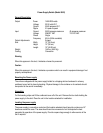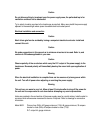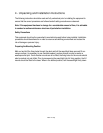
Warning
The power supplies have two sources of power. Disconnect (turn off) primary power before
making adjustments or service procedures.
Output power adjustment
Warning
The power supply stores energy after primary power is switched off. Wait a minimum of two
minutes for the capacitor charge to bleed off.
Taps are provided on TB1 to alter the output of the power supply. Small current changes may be
made by moving the tap from H to M to L. Highest current is on H; the lowest is on L. Larger
current changes may be made by moving the tap from 4 to 5 to 6. Highest current is on 4; the
lowest is on 6. One input line must be on H, M or L. The second line must be on 4, 5 or 6. When
the primary line is high (120/240 VAC), tap 5 or 6 should be used. For 110/208 VAC use any tap, 4,
5 or 6. When changing taps, do not insert wire into the connector so far as to clamp on the
insulation rather than the bare wire. Be sure to tighten the connector screws.
Routine maintenance
Warning
The power supply has two sources of power. Turn off power before servicing the unit.
Warning
This unit can run warm to very hot. Allow at least 15 minutes after turning off the power for
the unit and its components to cool down before attempting any service procedures.
At 6 month intervals, clean dust out of the unit. Inspect all electrical connections. Look for
discoloration due to overheating. Be sure all components are clean and tight.
Troubleshooting
Much data can be obtained from the volt-ammeter built into the lamphouse control panel. In
addition, the following instruments will be needed to perform all trouble-shooting operations that
can be done in the field:
Portable volt-Ohm-ammeter (VOM) – must be capable of supplying current to forward bias a silicon
diode on R X 1 range. (Some digital instruments cannot; consult operator’s manual for instrument
concerned.)
Clamp-on A.C. ammeter capable of ¼ ampere or better resolution.


















